Offsite: the next frontier for retail media
How and why retailers are setting their eyes on offsite channels to expand their retail media networks
Alec Haase,
Praveen Satyanarayana
May 23, 2024
|10 minutes

It’s no secret that retail media networks have surged in popularity over the last few years. In fact, retail media has the potential to become one of the most significant growth engines in the history of digital media. This year, over 1 in every 6 dollars spent on digital ads in the US will go toward retail media, according to Emarketer.
A major shift in retail media is set to accelerate this growth. While initial efforts have primarily focused on onsite ad placements, retailers are increasingly selling ad packages for offsite placements in channels like email and Facebook. This new frontier opens up massive revenue opportunities but also presents operational challenges.
In this blog post, we will explore what retail media is, the rise of offsite channels in retail media, and how retailers can get started expanding their retail media offerings offsite.
What is retail media?
Retail media is an emerging advertising model where retailers utilize their digital properties and first-party data to provide targeted, personalized advertising opportunities to brands. This approach benefits both brands and retailers:
- For Brands: They can reach consumers on high-intent retail websites and apps, enhancing their targeting efforts with rich first-party data provided by retailers.
- For Retailers: They can generate new revenue streams by offering advertising placements across their digital properties, capitalizing on their existing customer base and first-party data.
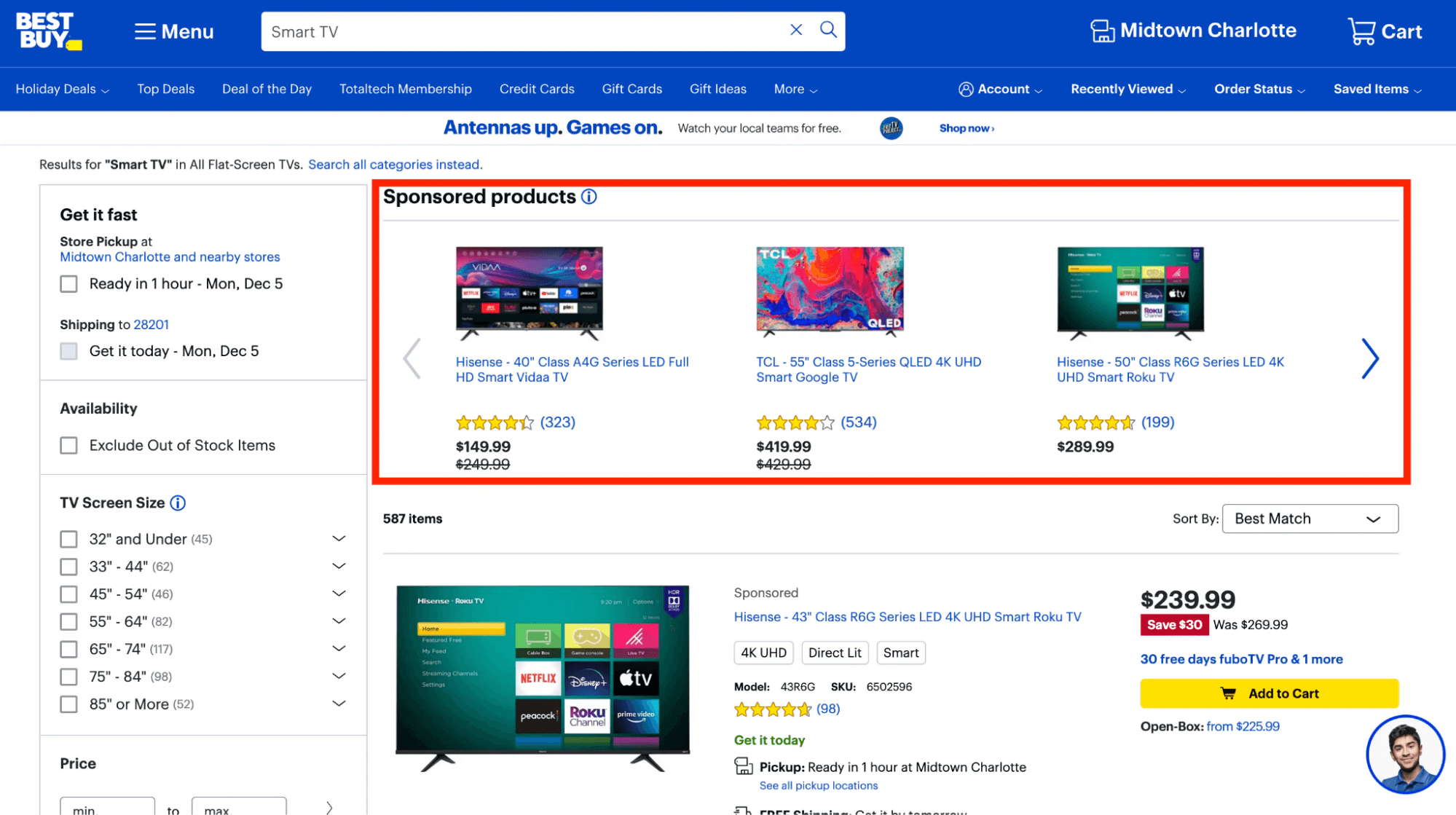
The most common examples of retail media placements include sponsored product placements personalized to your search results on a retailer's website.
Types of retail media
While there are a variety of channels that retailers offer advertisers, you can classify the channels into two primary categories: onsite and offsite.
Onsite retail media
Onsite retail media specifically refers to advertising placements directly on a retailer's owned digital properties, such as their website and apps. It leverages placements like sponsored product listings and onsite display ads to capture consumer attention at the point of search on the retailer's website. The primary types of onsite retail media placements include:
- Sponsored Products: These are sponsored product listings that appear within relevant website search results, seamlessly integrating with organic listings to draw consumer attention.
- Sponsored Brands: Banner ads that appear within website search results, promoting brand awareness and driving traffic to the brand’s product pages.
- Display Ads: Banner ads placed across the website, targeting consumers as they browse different sections, enhancing visibility and engagement with the brand.
Offsite retail media
While the majority of retail media spending occurs onsite today, retailers are quickly expanding their advertising offerings to include offsite channels and placements as well. Offsite retail media extends advertising opportunities beyond the retailer's owned web properties to external properties outside their website, like paid social, paid search, email, OOH, and more.
For example, a bike brand can purchase placements in a retailer's Facebook and email campaigns, targeting users who have viewed their products on the retailer's website.
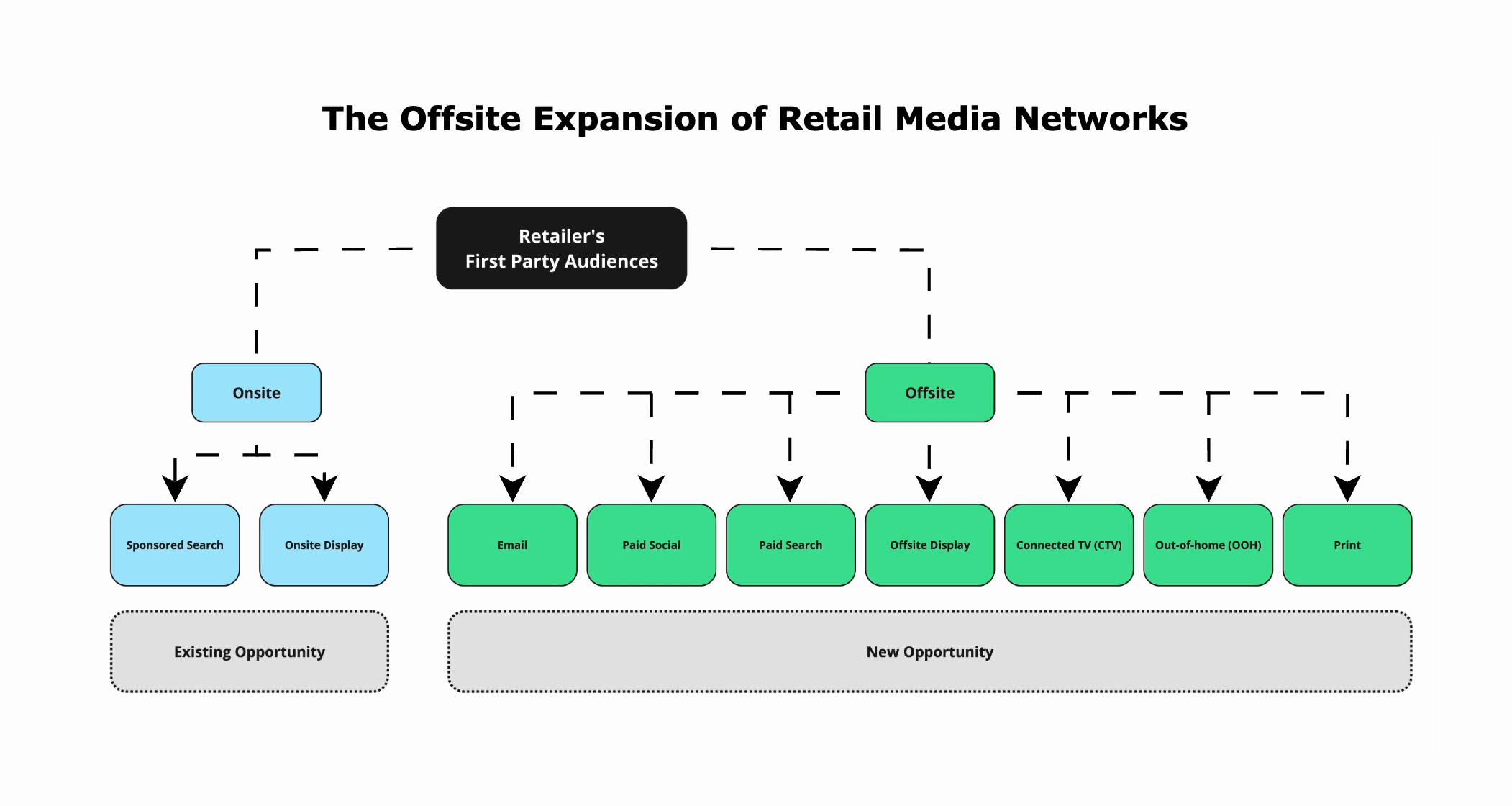
Offsite retail media opens the door for a wide range of new advertising opportunities
Why is offsite gaining popularity?
The move towards offsite channels is driven by the need to overcome the limitations of onsite media. Offsite retail media allows retailers to:
- Extend Reach: Connect with potential customers beyond their websites, increasing audience reach.
- Lower Acquistion Costs: Utilize brand advertiser dollars to fund acquisition campaigns at minimal cost to retailers.
- Diversify Revenue: Open new revenue streams by offering advertising solutions across a wider array of channels.
- Lower Barrier to Entry: Offsite media does not require a substantial investment in new tools and technologies.
- Enhance Engagement: Engage with consumers in various digital contexts, leading to higher conversion rates.
- Respect Privacy: Enable advertisers to reach audiences without the need to buy/sell audience lists.
Offsite retail media challenges
With such high interest and ad dollars already flowing into retail media networks, you may be wondering how offsite isn't already mainstream. To answer this question, you have to examine both attribution and brand tradeoff challenges.
Attribution
A primary benefit of onsite retail media is “closed loop attribution,” which provides advertisers with a clear understanding of every dollar made from their campaigns. This is because onsite retail ads display directly on the retailer’s website or app--often in a logged-in experience–where users will typically also transact. This seamless environment provides accurate attribution for every purchase, making it easy to measure the ROI of onsite ads.
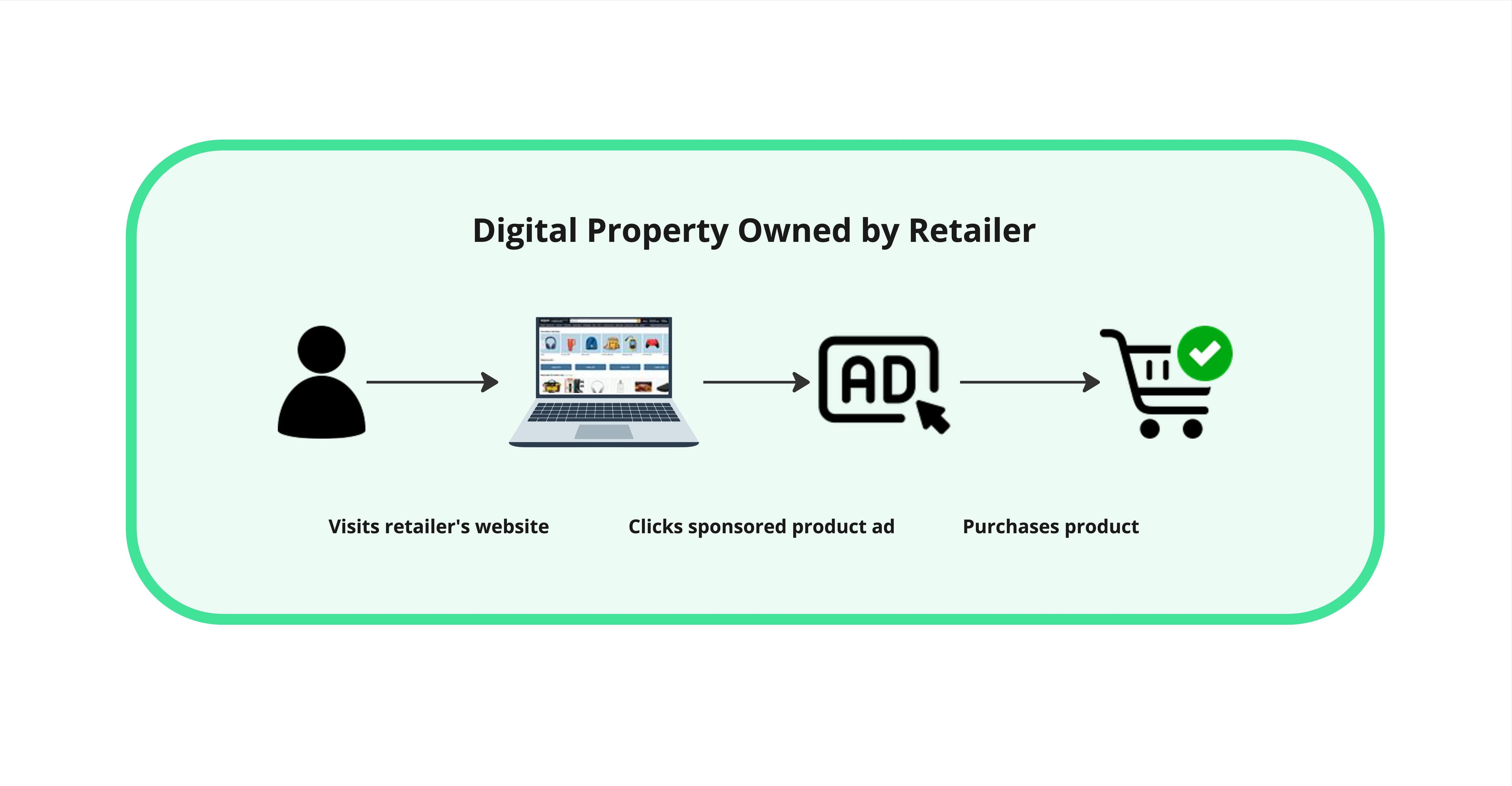
Retail media networks offer advertisers full-funnel insights thanks to closed loop attribution
Attribution complexities in offsite retail media
Offsite advertising, on the other hand, introduces additional platforms and steps that make attribution more complex. When users click on ads from external platforms like Facebook, they navigate from the ad platform to the retailer’s website to make a purchase. This journey introduces multiple points where data can be lost, especially with the declining effectiveness of tracking pixels and third-party cookies. As a result, some purchases driven by offsite ads may go unattributed, leading to an incomplete picture of ad performance for advertisers who want a clear understanding of their retail media ROAS.
Solutions to offsite attribution challenges
To overcome these attribution hurdles, new technologies and practices are emerging to help brand and retail media advertisers alike get a better understanding of their return on ad spend:
- Conversion APIs: Ad platforms are quickly releasing and enhancing Conversion APIs, which help track and attribute conversions By bypassing pixel signal loss, these APIs allow for the secure transmission of conversion data directly from the server to the ad platform, ensuring more accurate and privacy-compliant attribution.
- Data Clean Rooms: These secure data collaboration environments allow retailers and advertisers to share and analyze their customer and conversion data without exposing individual user information, improving the accuracy of attribution while maintaining privacy.
- Audience-Level Attribution: This attribution method focuses on measuring the incremental impact of ad campaigns on specific audience segments, helping advertisers understand performance across their desired audiences.
“Offsite retail media introduces extra 'hops' for shopper data, challenging RMNs. A strong data strategy and adeptness with technologies like Conversion APIs and Data Clean Rooms are essential for privacy-compliant data handling”

Myles Younger
Head of Innovation & Insights
, U of Digital
Note: This attribution challenge is less prevalent on owned offsite channels like email - making email a popular first step for offline retail media efforts.
Brand tradeoffs
When running offsite retail media ads, retailers use their own email, social media, or advertising accounts to deliver ads on behalf of their advertisers.
For example, a toothpaste brand can buy paid social retail media ad placements from a retailer. The retailer would run the campaign within their own Facebook account, targeting their own first-party audiences on behalf of the toothpaste brand.
Conflicts with brand advertising teams:
Retail media placements often create conflicts within a retailer's organization due to the need for coordination between retail media teams and internal brand marketing teams, which typically operate independently. This coordination introduces two primary conflicts:
- Prioritization: Deciding whether to prioritize retail media ads or the retailer’s own brand ads is often difficult. Brand marketers are often concerned about the impact of sponsored ads on customer experience. Retailers must use data to find the balance between maximizing ad revenue without cannibalization while maintaining brand voice, control, and relevance.
- Resource Allocation: Allocating resources between retail media and brand marketing campaigns requires careful planning and negotiation. Retail media campaigns might generate more immediate revenue, but brand marketing is essential for long-term brand building.
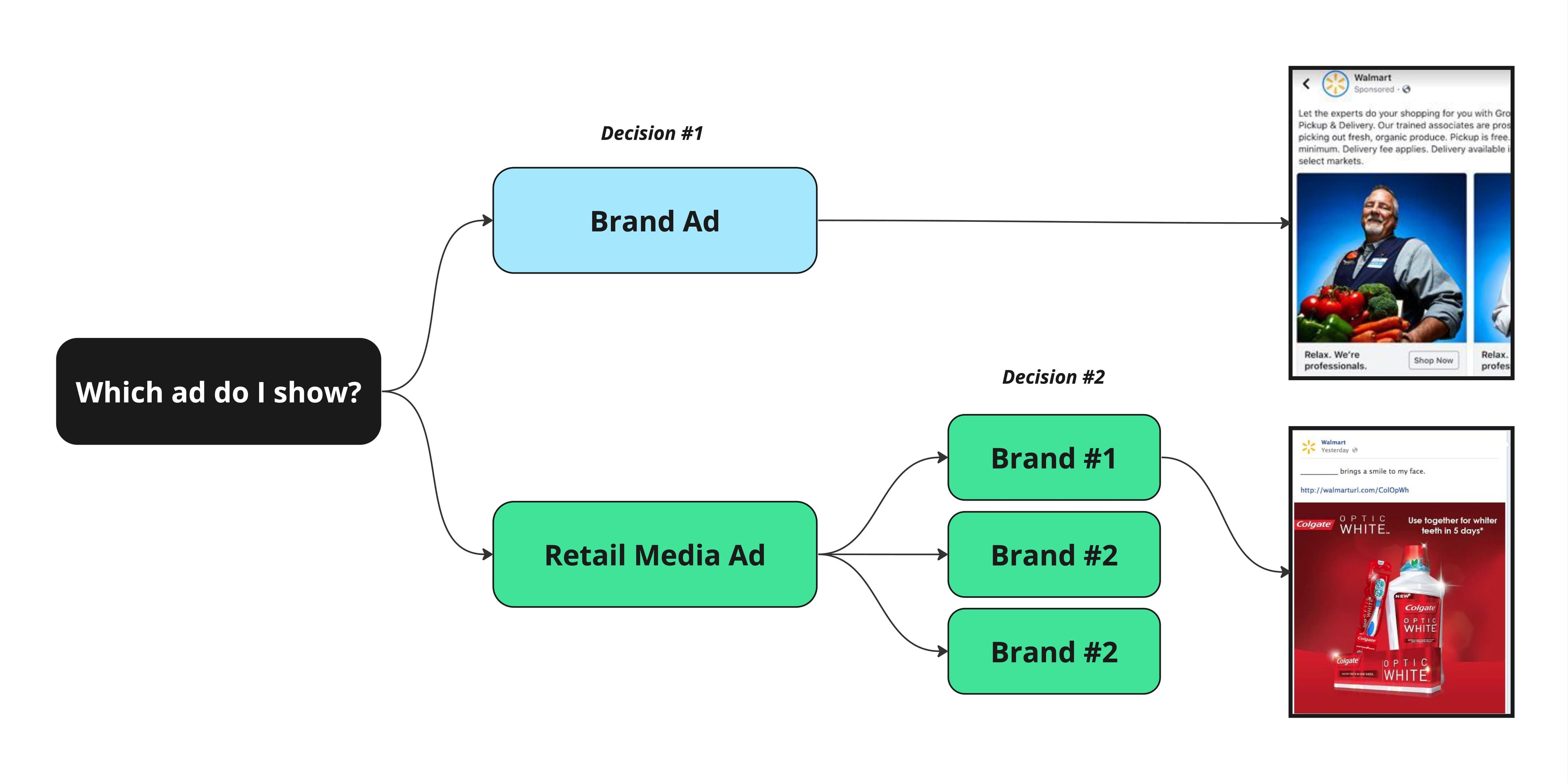
The retail media decisioning problem
Centralized audience and campaign management solutions
Historically, siloed channels and technologies have reinforced the separation of brand marketing and retail media teams. The different channels, systems, and platforms used by each team created little need for the two teams to align and collaborate. As more and more teams turn to offsite, however, these two worlds are beginning to merge as both sides need the core capabilities to collect, resolve, and activate customer and audience data across the same channels and platforms.
To address these issues, retailers need technologies that enable them to integrate and manage both brand and retail media efforts centrally. By better unifying these teams, retailers can:
- Maximize Media Dollars: Ensure that every customer touchpoint and advertising dollar is used effectively - whether on brand marketing or retail media.
- Reduce Ad Cannibalization: Use data to understand the impact of sponsored content on organic conversions, identifying and mitigating cannibalization through customer journey tracking, rapid experimentation, and product analytics.
- Maintain Brand Voice: Deliver consistent messaging across all channels, preserving the retailer's brand identity while supporting retail media efforts.
- Utilize AI Decisioning: Leverage artificial intelligence to optimize ad placements based on factors like conversion propensity, ad revenue potential, and brand impact. AI can help retailers decide where and when to show retail media placements, balancing the needs of both advertisers and the retailer’s own brand.
Getting started with offsite
Retail media networks are often misunderstood as single platforms that manage all aspects of ad delivery. In reality, they are a collection of separate marketing channels and advertising platforms where retailers place ads, hence the term “networks.” This means many of the existing marketing workflows retailers use can also power these retail media networks efforts, especially when it comes to offsite.
For example, brand marketing teams likely already push audiences and other first-party customer data to email and paid social platforms for retargeting and seasonal sales campaigns. Retailers can now leverage these same campaigns and workflows to power offsite retail media, delivering product-specific ads on behalf of advertisers. This can include sponsored placements within existing emails or dedicated ads within paid social campaigns on platforms like Facebook.
“Getting started with offsite retail media is far easier than many marketers realize. All it takes is adding sponsored placements to existing email campaigns.”

Andrew Jesien
Field CTO
, Hightouch
Centralized audience management platforms like Hightouch are quickly becoming popular solutions for retailers handling these offsite efforts. Marketing teams from leading retailers like PetSmart trust Hightouch as the central platform to self-serve and quickly deploy audiences across their many marketing and advertising channels.
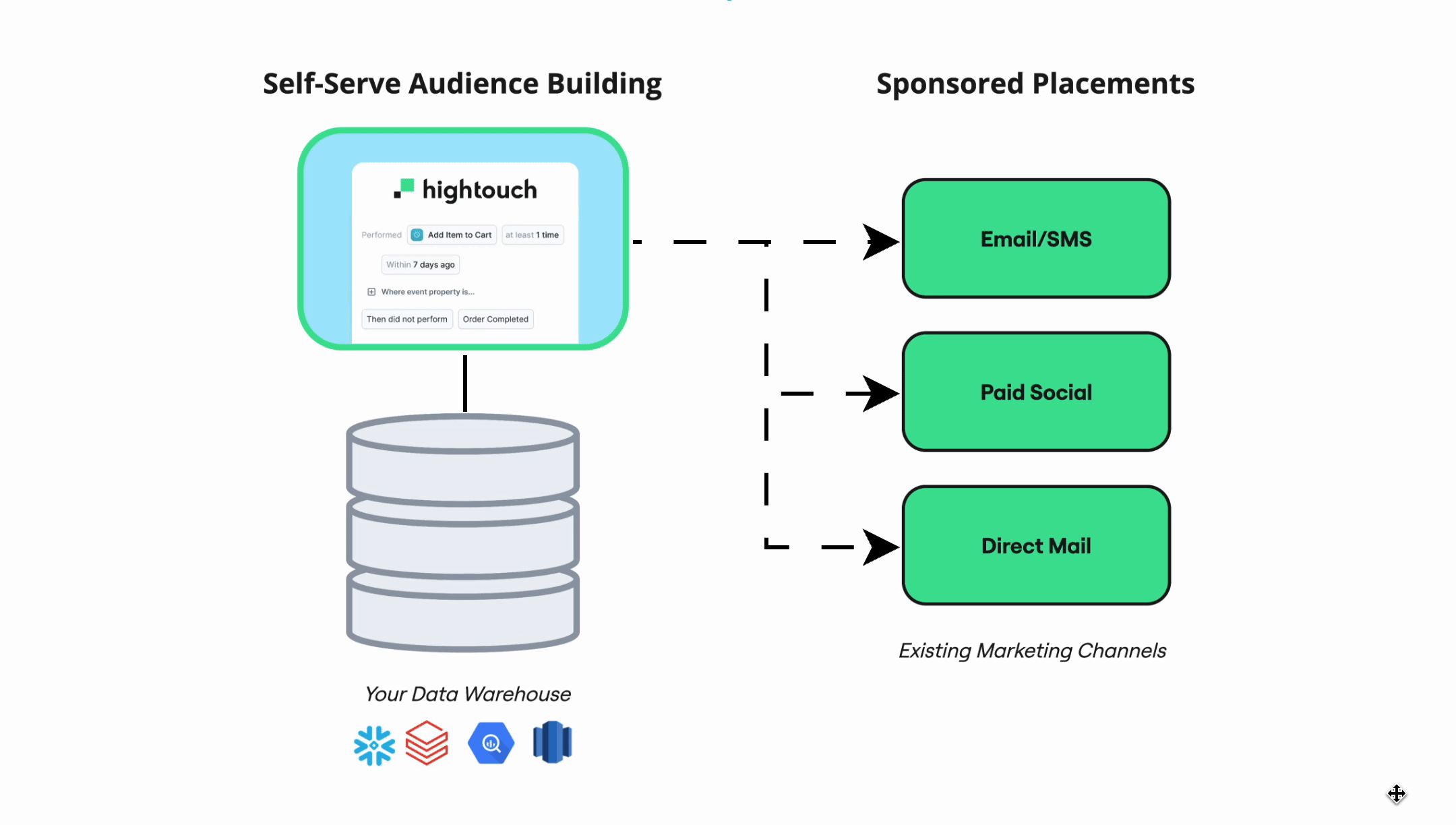
Centralizing audience management with Hightouch
Building out an extensive retail media offering is no easy task, but many marketing teams will be surprised by how low the barrier to entry is with offsite retail media. After initial tests, these teams can quickly scale their efforts, investing further in more advanced capabilities to optimize campaigns and maximize advertising ROI.
Conclusion
Expanding into offsite retail media offers retailers a significant opportunity to broaden their advertising scope and enhance engagement with brands and consumers. By strategically using their first-party data and selecting the right technologies, retailers can successfully launch offsite retail media efforts and immediately open up a new revenue opportunity to expand upon in the years to come.
Want to learn more about how Hightouch can help power your media network?
Read our solutions one-pager or book a demo with our team today.










